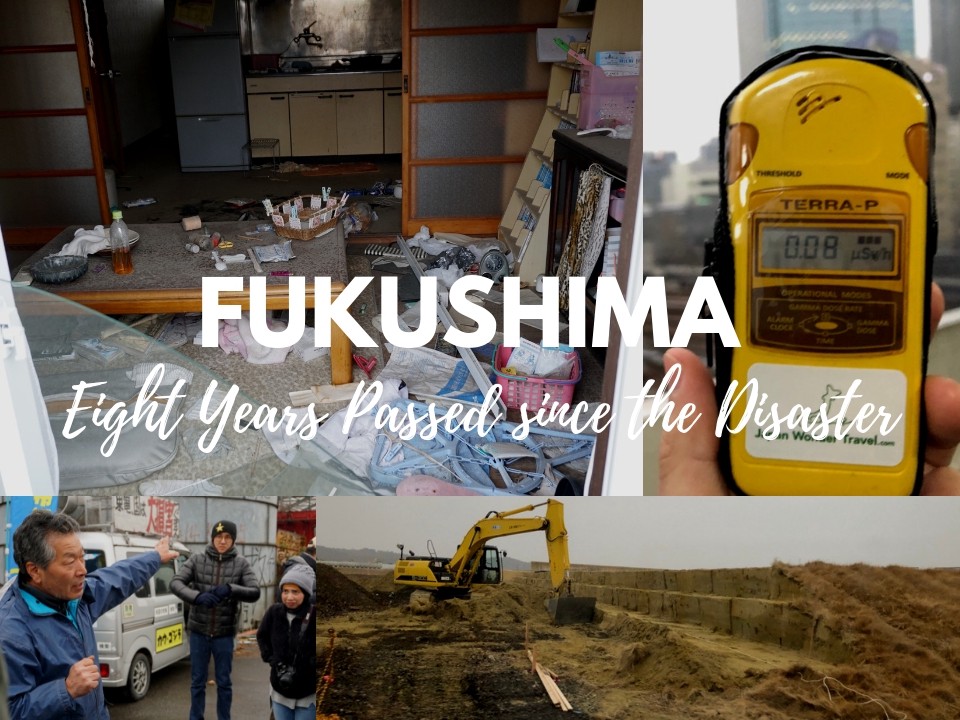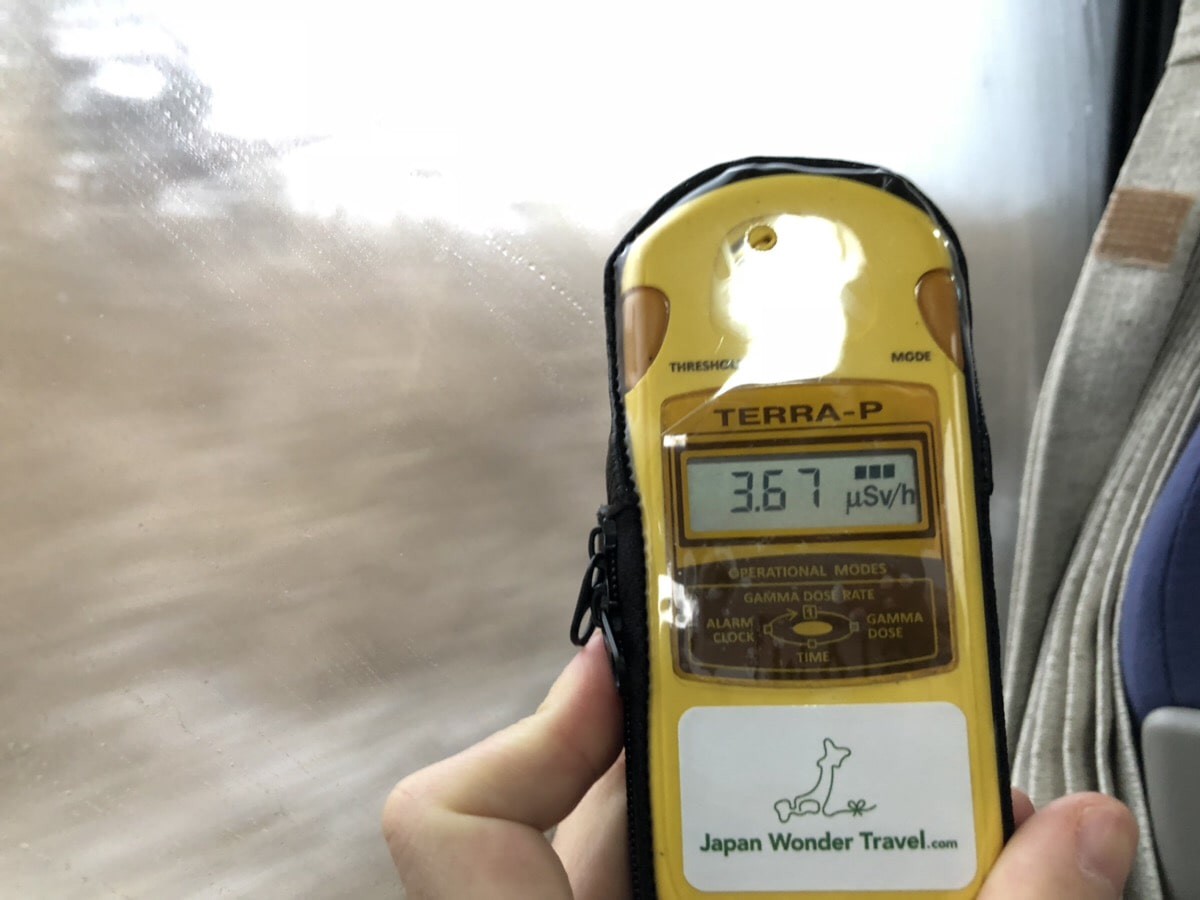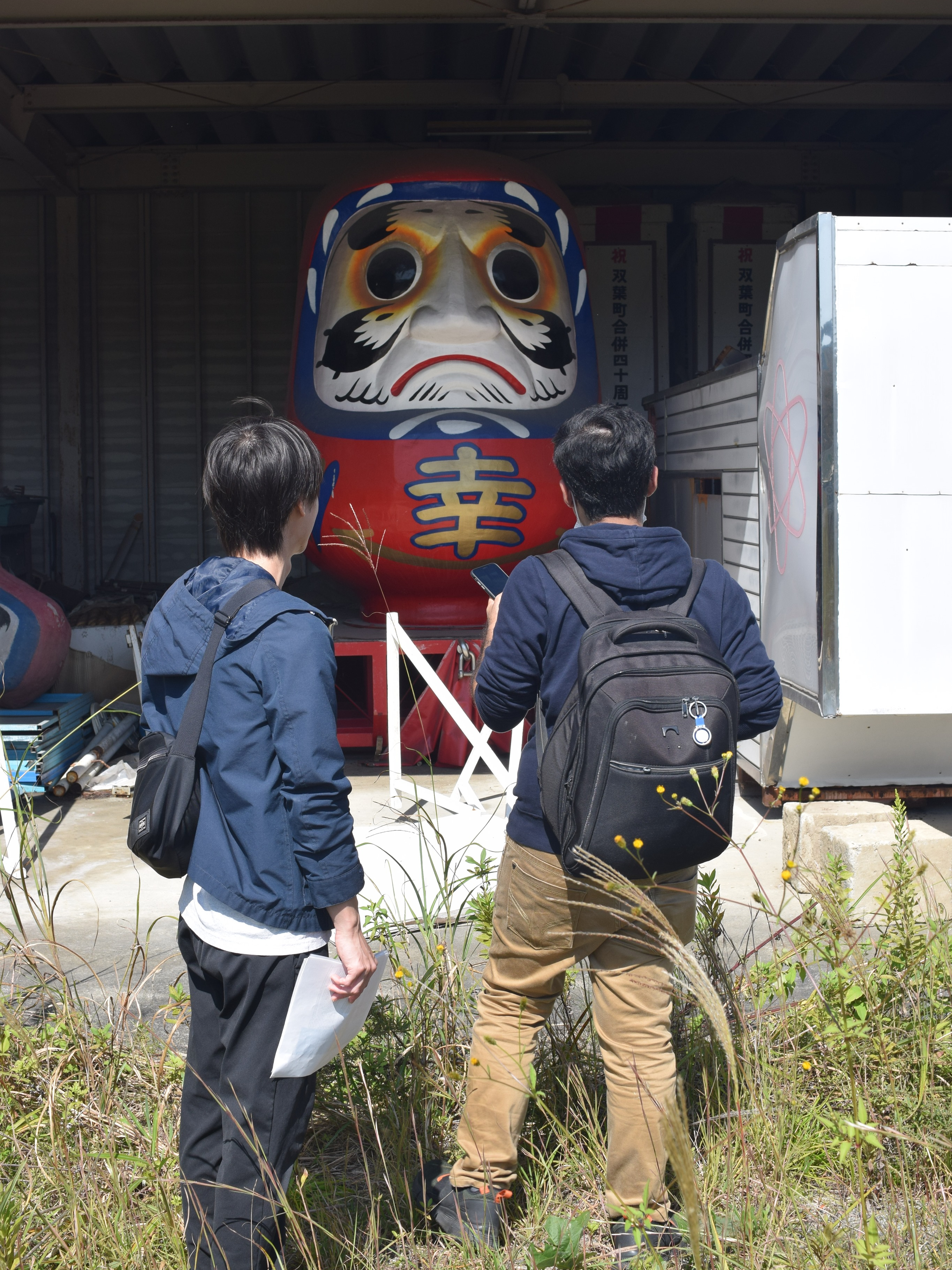Fukushima Tour: Unforgettable Day Trip from Tokyo
Walk around Fukushima within 20 km from Fukushima Nuclear Power Plant

I just took part in a day-trip tour with about 20 participants to Fukushima disaster area where the Great East Japan Earthquake and the mega tsunami attacked in 2011. Fukushima Prefecture is one of the most-damaged area by the disaster in Japan. The tour took us to two towns of east Fukushima near the coast where the Fukushima Daiichi (number 1) nuclear power plant are located: Namie (浪江) and Tomioka (富岡) towns.
*Please note that this article contains affiliate links.
It’s ashamed to say as Japanese but I had not known so much about the Great East Japan Earthquake on the 11th March, 2011. Finally, I got the chance to visit the disaster-hit area in Fukushima with this Fukushima disaster area day tour from Tokyo by Japan Wonder Travel. We reached within only 2 or 3 kilometers from the Fukushima Daiichi nuclear power plant.
There has been No-Go zones under the evacuation order since the earthquake occurred and the Fukushima Daiichi nuclear power plant spread radiation. Decontamination activities has been going on in Fukushima, but some areas are still regulated to enter for relatively high radiation dose The guides carefully led us to several spots we could see the remains of the disaster and hear stories by some local residents (of course, guides translate them into English).
This tour to Fukushima is held by the people who want to do something to support the disaster-hit area in Fukushima and really want more people to find out how things really are there. Today, I’d like to share my experience of this tour to Fukushima near the Fukushima Daiichi nuclear power plant.
▶︎Fukushima Daiichi Nuclear Power Plant Visit 2-Day Tour from Tokyo
Departing from Tokyo Station
This tour started from Tokyo Station on 8:00 and it spent 3.5 hours getting to Fukushima area by van. The participants including me were welcomed by the friendly guides Takuto-san and Yoko-san who can speak both English and Japanese. All of us gave brief self-introductions and I found out they were from various countries such as the United Stated, UK, France, Norway, Indonesia, Nepal and so on.
Learning about Fukushima and radiation
After that, Yoko-san explained about the itinerary and radiation dose in Fukushima with a handout. I had known little about the radiation, nevertheless, the explanation made me feel relieved since I found out the radiation dose of the locations we would visit were as low as it had no affect on the human body. For your information, the amount we are exposed to by flight from Tokyo to New York is a hundred times as much as the one in the areas like Namie and Tomioka.
According to the map of Fukushima disaster area on the handout, the restricted area under the evacuation order is divided into there zones: Difficult-to-Return Zone, Restricted Habitation Zone and Preparatory Zone for lifting of Evacuation Order. The pick-color zone on the map has been the most contaminated, and we could only see the area from inside of the car. The distribution looks a strange form, and it shows the direction of the wind to the northwest on that day when the nuclear power plant exploded.
Additionally, each of us got a Geiger counter to measure radiation. In Tokyo, the Geiger counter showed this lower radiation dose (around 0.08–0.1 microsievert/h).
Starting from Namie Town
We arrived at Fukushima area and started our journey from Namie, which is located within 20 kilometers from the Fukushima Daiichi nuclear power plant. We turned on the Geiger counter and it said 0.21 microsievert/h in front of Namie Station. The central zone in Namie we walked around is the area where the evacuation order has been already lifted. There were many ruined houses and school in untouched conditions in the area since the earthquake, where we understood how hastily the residents and students evacuated.
Students take off their shoes inside a school in Japan, and their shoes still remained at shoe lockers of the school there.
Communicating with local people in lunch time
After strolling in the centeral area, we had lunch at a small plaza in Ukedo (請戸) area in Namie where several small restaurants and shops gathered. Fortunately, a local festival was held at the plaza on the day. And, I met and talked to some local people who moved to other areas for the evacuation order and came back to Namie temporarily. There were about 21,000 residents in Namie before the disaster but are only 850 now. I heard that many of them wanted to return to their hometown.
Visiting a farm to hear the story from a local cowboy
We visited a farm owner (who was called “Cowboy”) at first in the afternoon to hear his story about the earthquake. Many participants told that this farm with his talk was the best impressive spot in thus tour. He made a graphic statement about the days just before the disaster: the explosion sound of the nuclear power plant, cattle dying from starvation (nobody could feed them for evacuation) and so on. He supported to abandon nuclear power generation based on his experience.
I was really shocked by his story and clearly understood that stable electricity in Tokyo was supplied from the Fukushima’s nuclear power plants. We including Tokyoite should not forget this whether we support the current energy generation policy or not. The vast farm housed a number of cattle which were unsalable since they were exposed to radiation. However, he claimed to live there with them in the future as well.
Miraculous Story at Ukedo Elementary School
The next destination was an elementary school along the coast in Ukedo. Before the school, the guide Yoko-san told the story of the school on the day when the maga-tsunami hit the area. Surprisingly, all of the students survived the tsunami though it was located just near the seacoast. They fled for refuge to a rising ground, which was an exceptional decision. Heading for the playground is standard policy in emergency situations such as earthquakes and fires in Japan. The school became a famous disaster spot for the story.
The Geiger counter said 0.08–0.1 microsievert/h (almost same as Tokyo) near the school which was located within only 6 kilometers from the Fukushima Daiichi nuclear power plant.
On the other hand, it showed around 3 microsievert/h on National Route 6 on the way to the next destination town Tomioka.
Tomioka Town hit by the mega-tsunami
We joined up with the other local guide Hiroko-san who was born and raised in Tomioka area. She loved her hometown but had to evacuate to safer places just after the 11th March, 2011, and then, she came back to Tomioka finally. She introduced how the disaster had changed the town but it also had a great hope with some tourist attractions and warm local people (100 people are registered as a resident of Tomioka so far).
She led us to a coastal point near Tomioka Station first. The place where we stood like this photo above was swamped by the mega-tsunami although the place was located at a height of 20 meters above sea level. Nobody living around there did not think tsunami came to that high ground.
We were guided about the building of Tomioka Station. Due to radiation exposure, the station had been left untouched for 3–4 years since the tsunami had destroyed it. After that, it started to be decontaminated (and the JR station is available now). At the same time, the problem of decontamination was where the wastes should be disposed. I saw lots of the wastes covered by black container bags put from place to place in the towns. Hiroka-san and the residents had moaned about the symbolic color of Tomioka changed from pink to black. Why pink originally?
Tomioka is famous as one of the best places to see cherry blossoms in Fukushima. We visited the spot and saw a large number of cherry blossom trees standing along the 2.5 kilometers long street. They forms a long cherry blossom tunnel in spring, however, they are largely designated as No-Go zones now. My visit in the early February is a little earlier than the cherry blossoms fully bloom, but I though the beautiful flowers would change back the color of the town into pink.
There are a pile of problems to solve in Tomioka as Hiroko-san guided us, nevertheless, I certainly realized that the residents were trying to find the way forward. Wish I will go there again in the cherry blossom season, and it’s highly recommended to join the tour especially in spring.
Farewell Fukushima…
Finally, it was the time to leave Fukushima back to Tokyo… There are still numerous traces of the disaster although about 9 years have passed since the Great East Japan Earthquake and the Fukushima Daiichi nuclear power plant accident. Decontamination in major areas in Fukushima is going on.
This tour gave me the one and only experience which was thought-provoking. I see and hear these voices so much everywhere both online and offline: “Is Fukushima safe now?” or “I’m for/against nuclear power generation”. Rather than those discussions, I think that it is more important for as many people as possible to see the real condition of Fukushima with their own eyes.
Thank you very much everyone in this tour including Takuto-san, Yoko-san and Hiroko-san. This Fukushima tour is quite friendly for everyone with kind English-speaking guides and simple transportation from Tokyo. It is also interesting to exchange opinions on Fukushima with people from various countries.
▶︎Fukushima Daiichi Nuclear Power Plant Visit 2-Day Tour from Tokyo
Here are also a couple of tours that take place in Futaba town(双葉町) which is the town right next to Namie.
The first tour is a walking tour that will take you around Futaba town which is one of the most affected towns by the nuclear disaster. Not only will you learn about the impact that the disaster had on this town, but you will see how the town is currently doing. You will also hear many stories regarding the former inhabitants and how it was to experience the nuclear disaster.
This next tour will also take you around Futaba town, but this time it is a cycling tour. Learn about how the town has been progressing ever since the nuclear disaster occurred in 2011. Hear stories of the people who used to live in Futaba town. Learn what happened before, during, and after the disaster. It is a tour that will make you rethink the nuclear disaster.
▽If you want to know more about Fukushima, this article is also recommended to read▽
For more info about Japan, check these articles below!
▽Related Articles▽
▼Editor’s Picks▼
Written by
Hi! I’m a writer and editor at Japan Web Magazine. Since 2017, I’ve written over 500 articles covering a wide range of Japan-related topics—must-visit travel spots, local food culture, helpful travel tips, seasonal events, anime, manga, and more. I travel all over Japan, from the snowy landscapes of Hokkaido to the tropical beaches of Okinawa. My hobbies, such as hunting for the best ramen shops and keeping up with the latest anime every season, help me share the magic of Japan with people from all over the world. Whether you're a first-time visitor or a Japan fan planning your dream trip, I want to help you experience the best of what this country has to offer. After traveling to many countries around the world, I still love Japan the most, and I continue to share information while making the most of my perspective as someone who was born and raised here. [Connect with me] ▷You can find more of my writing and follow my latest thoughts on Japan over on Medium. A bit more about me: [Traveler at heart] ▷Most unforgettable trip: Chichijima Island, a remote island that takes over 23 hours to reach by ferry from Tokyo! ▷Favorite neighborhood in Tokyo: Kagurazaka [Foodie life] ▷Obsessed with sushi and ramen ▷Proud foodie moment: Scored a seat at the legendary Sukiyabashi Jiro [Passionate otaku] ▷Favorite anime: March Comes in Like a Lion and Attack on Titan ▷Manga I live by: One Piece and Slam Dunk































